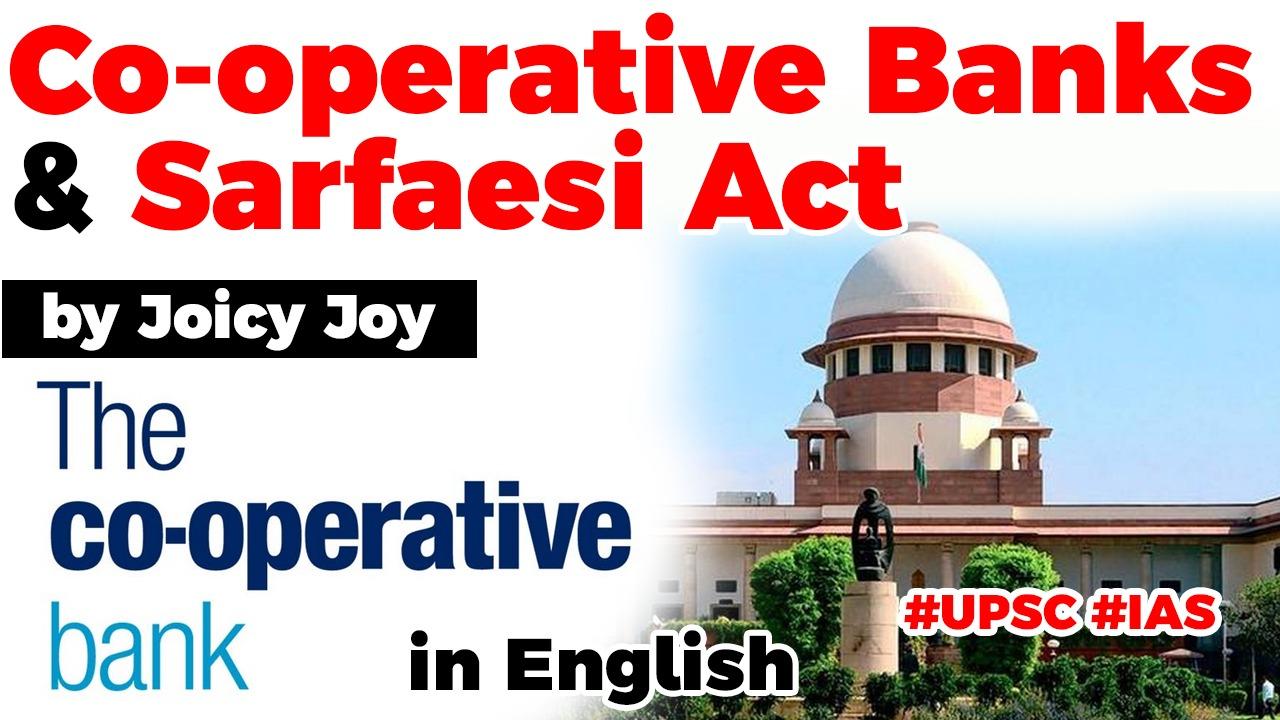Table of Contents
- Recently, the Supreme Court held that Co-operative banks established under a State law and multi-State level co-operative societies come within the ambit of the Securitisation and Reconstruction of Financial Assets and Enforcement of Security Interest (Sarfaesi) Act of 2002.
DETAILS
- Conflicting decisions by high courts:
- The judgment came in view of several conflicting decisions by high courts on the issues of :
- Whether the Co-operative banks can be called ‘Banks (financial Institution)’ under the Banking Regulation Act of 1949 or,
- Whether the Parliament has legislative competence to regulate financial assets of cooperative banks formed under state law.
- Supreme Court verdict:
- Upheld the central government notification of January 28, 2003 which brought co-operative societies within the purview of the Sarfaesi Act
- Supreme court said Co-operative banks come within the definition of “Banks” under the Banking Regulation Act, 1949 for the purposes of the Sarfaesi Act.
- The recovery procedure under the Sarfaesi Act is also applicable to co-operative banks and there is no clash with the Banking Regulation Act, 1949.
- Parliament has legislative competence to provide procedures for recovery of loans under the Sarfaesi Act with respect to cooperative banks.
- Recovery of dues would be an essential function of any financial institution and co-operative banks cannot carry on any activity without compliance of provisions of the banking Act and any other legislation applicable to such banks and the RBI Act.
Sarfaesi Act
- Banks utilize Sarfaesi Act as an effective tool for bad loans (Non Performing Asset) recovery.
- Effective only against secured loans where banks can enforce the underlying security.
OBJECTIVES
- Provides the legal framework for securitization activities in India.
- It gives the procedures for the transfer of NPAs to asset reconstruction companies for the reconstruction of the assets.
- Enforces the security interest without Court’s intervention.
- Gives powers to banks and financial institutions to take over the immovable property that is pledged to enforce the recovery of debt.
- It promotes the setting up of asset reconstruction companies (ARCs) and asset securitization companies (SCs) to deal with NPAs accumulated with the banks and financial institutions.
THREE ALTERNATIVE METHODS FOR RECOVERY OF NON-PERFORMING ASSETS
- Securitisation
- Securitization is the practice of pooling together various types of debt instruments (assets) such as mortgages and other consumer loans and selling them as bonds to investors.
- Asset Reconstruction
- Asset reconstruction is the activity of converting a bad or non-performing asset into performing asset with the help of Asset reconstruction companies.
- Enforcement of Security without the intervention of the Court.
- If the borrower defaults, the bank may enforce security interests by:
- Take possession of the security;
- Sale or lease or assign the right over the security;
- Appoint Manager to manage the security;
- Ask any debtors of the borrower to pay any sum due to the borrower.
Latest Burning Issues | Free PDF






















 WhatsApp
WhatsApp